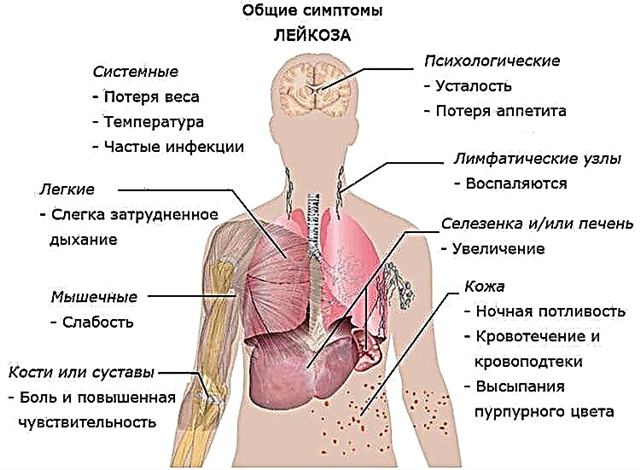Nasal congestion, itching, watery eyes, and persistent sneezing are common symptoms of allergic rhinitis (hay fever). Due to irritation of the nasopharynx with allergens, inflammation and increased secretion of clear nasal mucus occurs. The disease develops due to the body's hypersensitivity to the effects of certain irritating substances.
 As a rule, the first manifestations of the disease appear within 20-30 seconds after contact of the mucous membrane with pollen, animal hair, exhaust gases, vapors of household chemicals, etc. If an allergic rhinitis is not recognized in time, over time this can lead to complications.
As a rule, the first manifestations of the disease appear within 20-30 seconds after contact of the mucous membrane with pollen, animal hair, exhaust gases, vapors of household chemicals, etc. If an allergic rhinitis is not recognized in time, over time this can lead to complications.
People with hay fever often develop otitis media, laryngitis, and other types of ENT diseases.
General information
Allergic rhinitis is a consequence of the manifestation of an immediate type of allergic inflammation. Inflammation of the nasopharynx occurs when the mucous membrane of the upper respiratory tract comes into direct contact with foreign objects, which are identified by the immune system as potentially dangerous substances.
As a rule, most of the pathogens that settle on the surface of the nasopharynx are removed from the body within 20 minutes due to the work of the mucociliary system. The hairs that cover the surface of the nasal cavity literally push foreign objects out of the nasal passages.
Unlike microbes and viruses, allergens are very quickly absorbed into the soft tissues of the ENT organs. Therefore, within 2-5 minutes after contact with them, a person begins to sneeze, cough and feel a burning sensation in the nasal passages. Allergy appears when irritating substances come into direct contact with antibodies that are formed in mast cells. These cells are localized mainly in the upper airways, therefore, when the inflammatory mediators are evacuated from them, the mucous membrane of the nasal cavity and the conjunctiva of the eyes first of all suffer.
It should be noted that the symptoms of allergic rhinitis in adults are similar to those of an infectious rhinitis. However, the reasons for their development are different and if you do not use antihistamines to treat the disease, then the patient's condition will only worsen. That is why, if you suspect an allergy, it is advisable to pass the appropriate tests and be examined by an allergist.
Allergic and infectious rhinitis - what are the differences?
How to distinguish a cold from an allergic rhinitis? It should be noted right away that allergies are almost always accompanied by severe itching or burning at the site of the lesion. As a rule, even if untreated, an infectious rhinitis resolves within 7 days. If allergies become the cause of hypersecretion of nasal mucus, the runny nose will not go away until the irritant is eliminated.
In addition, hay fever can be recognized by its associated symptoms. With the development of an infectious ENT disease, patients often show symptoms of intoxication:
- nausea;
- lack of appetite;

- body aches;
- drowsiness;
- headache;
- temperature increase.
With a runny nose of an allergic nature, the above symptoms do not occur. Instead, patients complain of persistent itching in the nose, rawness in the larynx, watery eyes, and wheezing. Moreover, with hay fever, patients often have dark circles under the eyes and the conjunctiva of the eyes becomes inflamed.
Lack of fever, sneezing, itching in the nose and ophthalmic problems are the hallmarks of an allergic rhinitis.
Signs of hay fever
What are the first signs of allergic rhinitis? Conventionally, all clinical manifestations of ENT diseases are divided into two types: early and late. The former appear within 2-3 minutes after contact with antigens, the latter after a few hours or even days. Early manifestations of the disease include:
- sneezing often;
- lacrimation;
- itching and / or burning in the nose;
- severe runny nose;
- raw throat.
It is advisable to immediately stop the first symptoms of an allergic rhinitis with the help of antiallergic nasal drops and antihistamine medications of systemic action - "Zirtek", "Tavegil", "Claritin", "Erius", etc.
If this is not done, within literally a few hours, the state of health will greatly deteriorate. In addition, it is necessary to identify and exclude the allergen that caused the development of the allergy.

In the presence of malfunctions in the functioning of the immune system, hay fever manifests itself already in childhood or adolescence. According to statistics, the disease is more common in people in whose families close relatives suffer from hay fever, allergic diathesis or dermatitis.
Common Symptoms
 The severity of hay fever symptoms largely depends on the degree of sensitization of the body, i.e. the degree of its sensitivity to the action of one or another irritant. Late symptoms of allergic rhinitis cause a lot of inconvenience and negatively affect the patient's quality of life. These include:
The severity of hay fever symptoms largely depends on the degree of sensitization of the body, i.e. the degree of its sensitivity to the action of one or another irritant. Late symptoms of allergic rhinitis cause a lot of inconvenience and negatively affect the patient's quality of life. These include:
- labored breathing;
- nasal congestion;
- photophobia;
- irritability;
- poor sleep;
- distorted sense of smell;
- prolonged cough;
- swelling of the eyelids;
- inflammation of the conjunctiva of the eyes;
- ear congestion;
- dark brown circles under the eyes;
- chronic fatigue;
- frequent incidence of ARVI.
Catarrhal otitis media and conductive hearing loss are common complications of moderate to severe allergic rhinitis.
If the disease is not cured in time, over time the patient will develop eustachitis or otitis media. You need to understand that with allergies, the body's immune defenses are weakened. For this reason, the risk of developing an infection in the airways affected by inflammation increases. Very often, inflammatory processes involve not only the nasal mucosa, but also the auditory tube.
Local manifestations
Frequent sneezing, nasal congestion and watery eyes are a good reason for seeking help from an allergist. Untimely treatment of the disease can subsequently turn into rather serious consequences.
According to statistics, about 15% of people with allergic rhinitis develop bronchial asthma. Obstruction (narrowing) of the lumen in the bronchi entails a violation of gas exchange in the lungs and, as a result, poisoning of the body with carbon dioxide.
Asthma attacks that occur during severe allergic rhinitis can lead to acute asphyxia and death.
During a visual examination of the respiratory organs, the otolaryngologist states loosening and blanching of the nasopharyngeal mucosa. As a rule, significant changes in the tissues of the throat are not observed. But in some patients with a severe course of the disease against the background of allergies, tonsillitis and laryngitis develop.
The high degree of sensitization of the body makes people sensitive to the slightest odors. Tobacco smoke, vapors from household chemicals and the smell of washing powder can potentially provoke lacrimation and severe runny nose. The manifested allergy is caused by inflammation of the nasopharyngeal mucosa, which in turn occurs as a result of the release of histamine from mast cells.
To reduce hay fever, doctors recommend using intranasal corticosteroids, antihistamines, and decongestants. Adequate and comprehensive therapy allows stopping the manifestations of ENT pathology within two days.
Stages of development
Depending on the provoking factors and the duration of inflammatory reactions, intermittent (seasonal) and persistent (year-round) rhinitis are distinguished. Intermittent rhinitis occurs 4 times more often than perennial. Pollen of alder, oak, wheat, mallow, dandelion and other plants can provoke its development. The peak of the incidence usually falls in the spring-autumn period.
Year-round allergic rhinitis is a less common form of the disease, which is most often diagnosed in people in whose families close relatives suffer from allergic pathologies. Food, library dust, animal hair, medicines, exhaust gases, etc. can cause inflammation of the nasopharynx. In the process of development, hay fever goes through several stages:
- vasotic - characterized by periodic nasal congestion and a slight change in the tone of the blood vessels; you can stop the manifestations of the disease by taking decongestants (topical drugs for the common cold);
- vasodilation - severe swelling of the mucous membrane leads to constant nasal congestion and difficulty breathing;
- edema of a chronic form - with a prolonged course of allergic reactions, the mucous membrane acquires a bluish tint, the patient develops dark circles under the eyes and a characteristic "allergic" fold on the bridge of the nose;
- hyperplasia - against the background of chronic inflammation of the nasopharynx, the mucous membrane gradually grows, which subsequently becomes the cause of the formation of polyps in the nose.
It is obvious that ignoring the problem only worsens the state of health. To prevent side diseases, it is advisable to seek the help of a specialist at the initial stages of the development of an allergic rhinitis.




